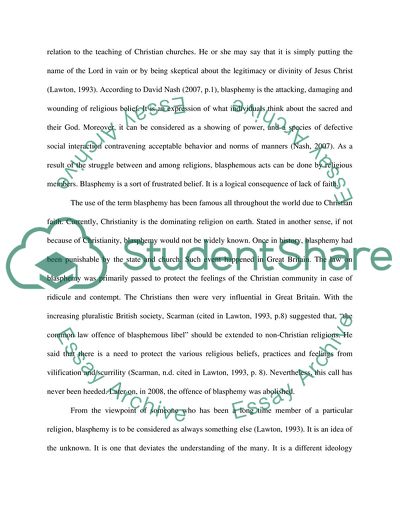Cite this document
(Dealing with Blasphemy in Media Coursework Example | Topics and Well Written Essays - 2500 words, n.d.)
Dealing with Blasphemy in Media Coursework Example | Topics and Well Written Essays - 2500 words. Retrieved from https://studentshare.org/religion-and-theology/1747744-what-is-blasphemy-and-how-should-it-be-dealt-with
Dealing with Blasphemy in Media Coursework Example | Topics and Well Written Essays - 2500 words. Retrieved from https://studentshare.org/religion-and-theology/1747744-what-is-blasphemy-and-how-should-it-be-dealt-with
(Dealing With Blasphemy in Media Coursework Example | Topics and Well Written Essays - 2500 Words)
Dealing With Blasphemy in Media Coursework Example | Topics and Well Written Essays - 2500 Words. https://studentshare.org/religion-and-theology/1747744-what-is-blasphemy-and-how-should-it-be-dealt-with.
Dealing With Blasphemy in Media Coursework Example | Topics and Well Written Essays - 2500 Words. https://studentshare.org/religion-and-theology/1747744-what-is-blasphemy-and-how-should-it-be-dealt-with.
“Dealing With Blasphemy in Media Coursework Example | Topics and Well Written Essays - 2500 Words”, n.d. https://studentshare.org/religion-and-theology/1747744-what-is-blasphemy-and-how-should-it-be-dealt-with.


